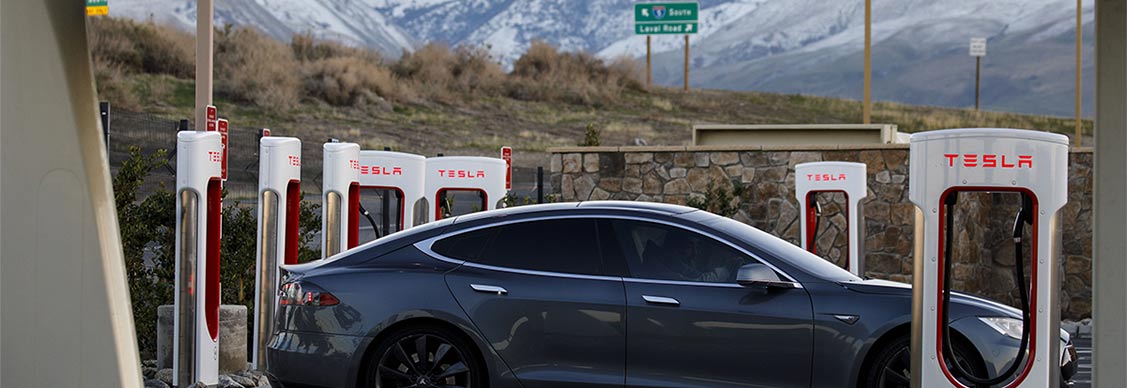Why the infrastructure bill could bring electric vehicles up to speed
Electric vehicles are here, but where are the charging stations?
More electric vehicles are showing up on the roads every day, and more are coming. But while electric cars are becoming a common sight, charging stations are not in all places.
The U.S. has long lagged behind other countries when it comes to electric vehicle charging stations. That could change with the Biden Administration's $2 trillion infrastructure plan, which calls for half a million EV charging stations by 2030. The plan also includes a US$174 billion investment in electric vehicles, including charging stations.
There's a long way to go. Currently, there were slightly over 42,000 public charging stations in the country as of May 13, 2021, with around 102,000 charging outlets. Most are located in high-income urban areas. Norway has about 35 EV chargers per 10,000 people, Sweden 10 per 10,000, while the U.S. has less than five per 10,000.
So, what kind of support is needed to get closer to the numbers seen in other countries? Countries that have more charging stations usually have government support. But there's also a role for companies to come up with creative models.
"Recognizing the need for charging stations is a great first step. That kind of deployment is a major infrastructure challenge," says Brian Oakley, Executive Vice President, Energy and Infrastructure, JLL.
Roadblocks to widespread charging
Biden’s plan proposes spending billions to encourage manufacture and purchase of electric vehicles through tax credits and other incentives as well as funding for charging stations. But there are plenty of challenges to adding half a million charging stations in less than a decade.
For one, charging stations are generally not profitable on their own, Oakley says. They are either partially subsidized by grants or are loss-making amenities installed by landlords. Even with grant support, the business models of charging network companies are typically focused on high-demand properties such as grocery-anchored shopping centers in affluent urban areas; such charging deployment may include a row of priority parking with charging stations.
These examples are the "low hanging fruit" that companies have been pursuing up to now, says Oakley. But creating a nationwide network of charging stations on par with that in other countries would require setting up stations everywhere, not just profitable sites in highly trafficked areas.
Looking for more insights? Never miss an update.
The latest news, insights and opportunities from global commercial real estate markets straight to your inbox.
The costs are high. Putting in a level 3 charger – which can charge a car in under an hour – costs an estimated $81,818. Level 2 chargers – which charge within four hours – cost about $5,440 each. All require annual maintenance.
Moreover, the timeline to profitability is long. Most charging network operators expect to own and operate charging stations for seven to 15 years before achieving financial success, says Will Goldenberg, Senior Associate, Energy and Infrastructure, JLL.
It's also unclear how much these operators can expand based on the potential for achieving a profit, says Goldenberg. Most network operators are charging customers by unit of power delivered or by the hour. At the same time, many EV owners prefer to charge conveniently and cheaply at home when possible, thus reducing some potential revenue for network operators from homeowners. Many renters do not have access to charging at home and are dependent upon charging options at work parking lots or other sites. The disparity in charging options between homeowners and renters can raise equity concerns.
One large charging network operator generates revenues by selling advertising on digital displays near charging stations rather than charging for power. This is a creative alternative to charging customers for the power they consume. However, this revenue model also favors busier sites in urban areas and is unlikely to enable a national network buildout.
Government incentives and other solutions
Creating a nationwide network of half a million EV charging stations as Biden’s plan calls for will require input from both government and the private sector, says Oakley. Government incentives such as tax credits could help offset some of the hefty upfront cost of installing EV charging stations. Tax credits have been very effective in mobilizing and sustaining the solar industry as over the past 15 years.
State and local governments also have a role to play in establishing sustainability goals, including a minimum number of electric vehicles and charging stations. Local or state subsidies could also help underwrite the cost of charging in areas where it's otherwise not economically feasible. Favorable state program’s such as California's Clean Transportation Program and investment in charging by electric utilities can help, says Goldenberg. Another example is found in Alaska, where the state is allocating funds to support deployment of level 3 chargers along highways and level 2 chargers in population centers.
From there, it's up to companies to create innovative new business models, says Oakley, citing Tesla's system for reserving a spot at a charging station. An app can slot in users and give users a full or partial charge, depending on demand.
"That's where the private sector can be really instrumental in sort of optimizing the business within a framework that involves government incentives and support," he says. “Perhaps we’ll see the emergence of public-private partnership business model that effectively combine government incentives and support with private sector innovative and execution know how.”
